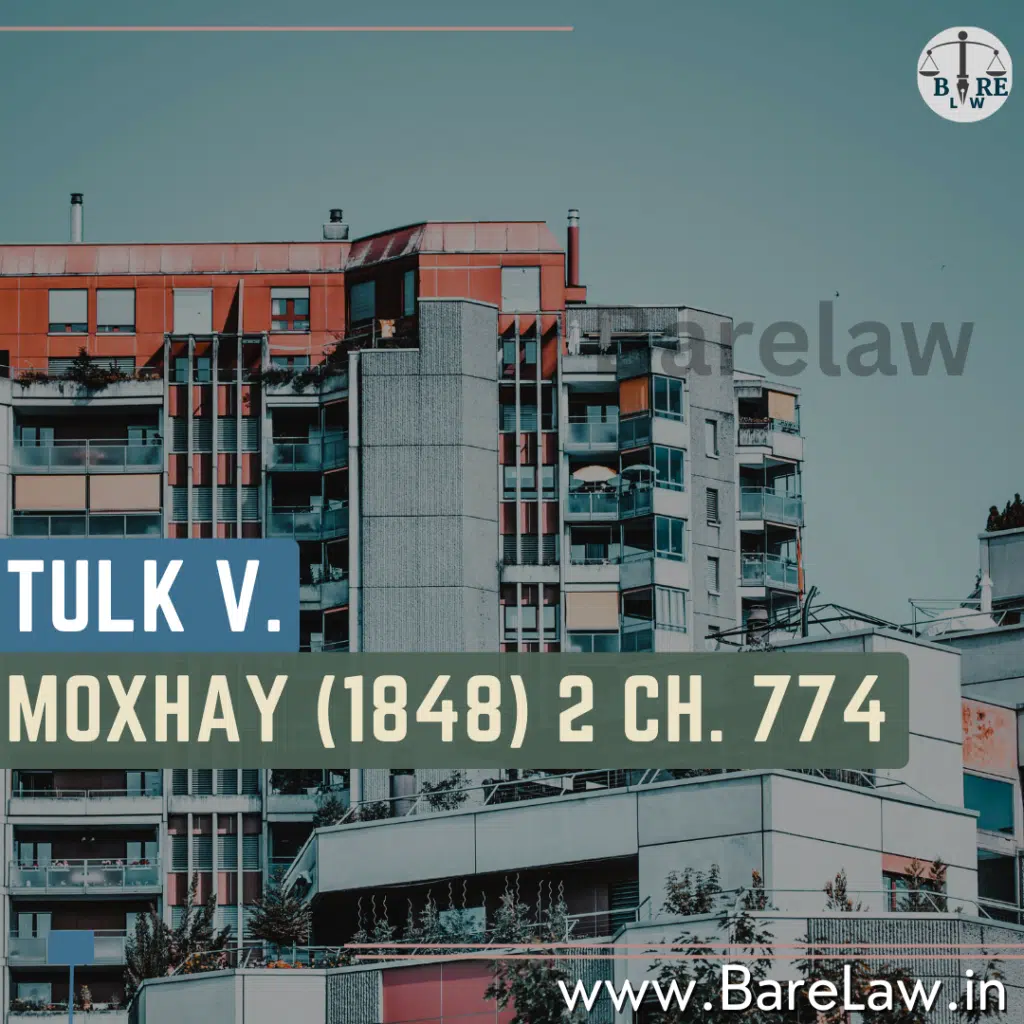
Table of Contents
Tulk v. Moxhay (1848) 2 Ch. 774 | BareLaw
Tulk v. Moxhay (1848) 2 Ch. An important decision in English property law, 774, established that equitable covenants might be enforced against prospective buyers. This article highlights the significance of the case and the ensuing legal discourse it generated by delving into the case’s background, the legal issues involved, the court’s verdict, and its impact on property law.
Introduction:In 1808, Charles Augustus Tulk sold a plot of land he owned at Leicester Square with a covenant binding all future owners to maintain Garden Square free from buildings.
Tulk v. Moxhay is a landmark case in property law relating to equitable covenants – specifically their application to parties who acquire land from an original covenantor. The decision in this case has serious implications for property rights and notice doctrine underpinning conveyance of land.
Background and Facts:
Charles Augustus Tulk sold a piece of property in Leicester Square in 1808 and included a covenant requiring all subsequent owners to keep Garden Square clear of structures. TLater, the title changed hands a few times before coming to Edward Moxhay, who understood the covenant’s provisions but argued he was not obligated by them. it because there was no privity of contract.
Legal Issues:
Whether an equitable restrictive covenant might be deemed to “run with the land” and so bind third-party purchasers without privity of contract was the primary question at stake.
Judicial Observations and Decision:
According to Lord Cottenham’s court, any transferees operating under equity were subject to that agreement. The ruling stated that anyone aware of such restriction ought not breach them even though his or her name never appended onto any document containing such clause. It was a significant departure from the custom of requiring privity of either estate or contract in order to enforce covenants.
Implications and Analysis:
Tulk v. Moxhay is noted for its influence on negative and positive covenants within property law. However, this decision has drawn praise and criticism for the same reason, with some praising it for being founded on the notion of equity. They argue that such a decree won’t be in line with public policy which promotes free land allocation and various uses of land. However, proponents claim that the rule is reasonable in equity as an accurate or constructive notification of subsequent purchasers needs to be given. The case influenced legal thinking in many jurisdictions including India, where it highlighted the need for balancing between interests of covenant holder and public interest.
Conclusion:
The case, Tulk v. Moxhay still stands as a landmark in property law, particularly on the issue of enforceability of equitable covenants. It brings out the need for notice doctrine in property transactions and provides a precedent for the interpretation of restrictive covenants. This case is an example of how property law develops and can be adjusted to reflect new conditions in society or economy.



